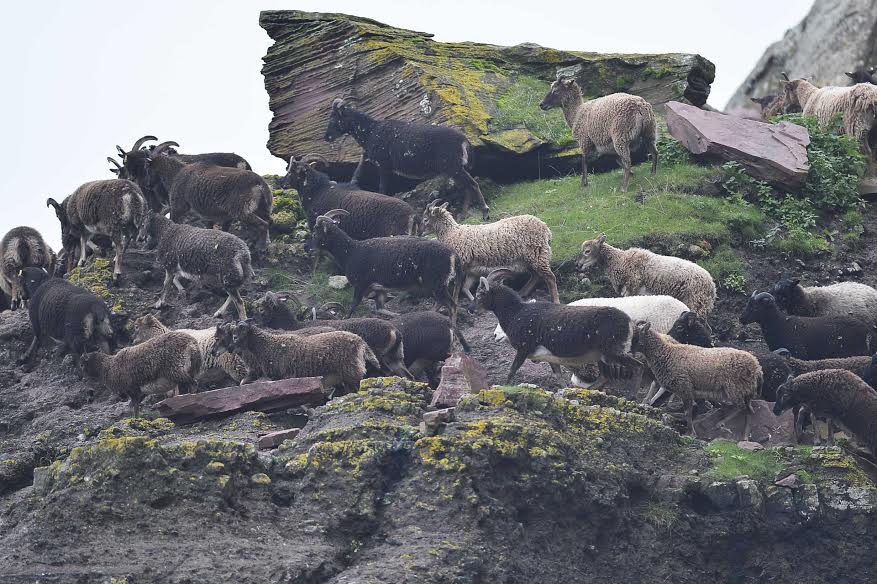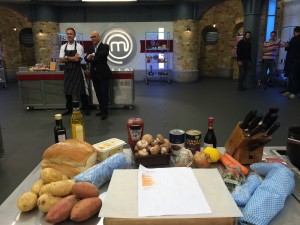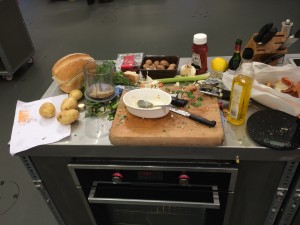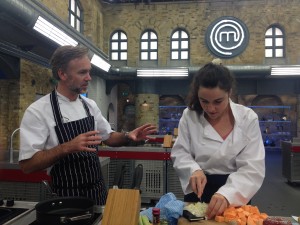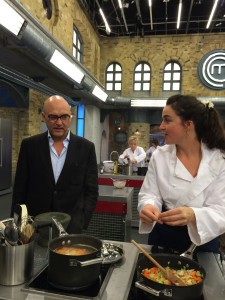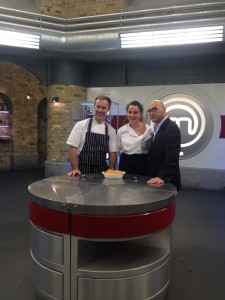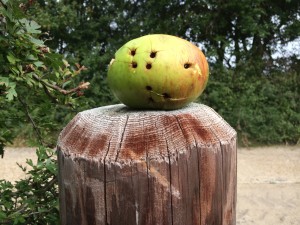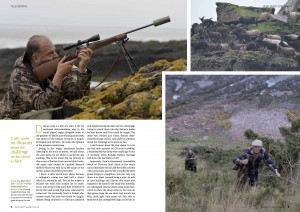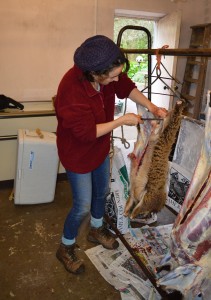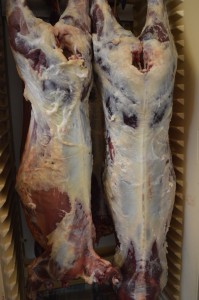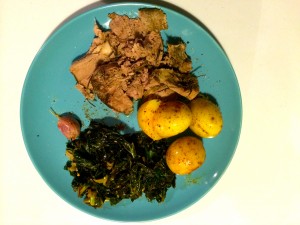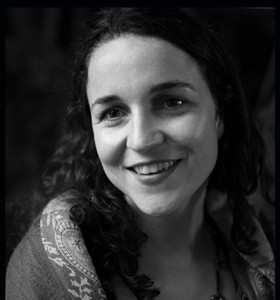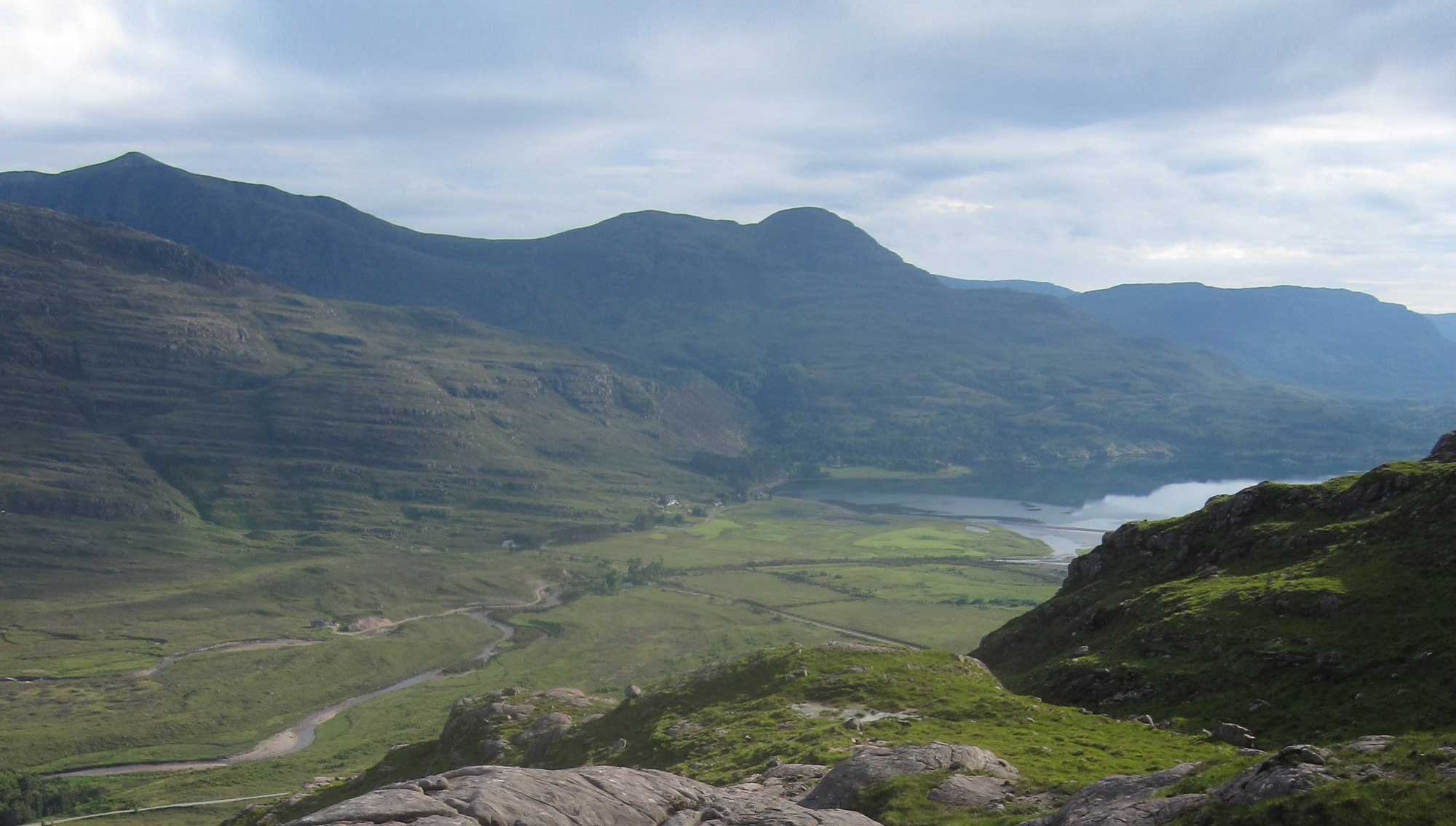This blog is about to get bloody. Sorry, but I did say I was writing a book about only eating animals I have killed myself. This means at some point I will have to kill something. The point is to do it in as humane a way as possible and to educate people about where meat comes from.
But first some comedy. After all, it is difficult to look at things we are frightened of straight on. I believe most people are in denial about where meat comes from and so I am trying to mix in some lighter stories and vegetarian recipes, as well as a more serious message into this blog.
I am already getting some interest from the foodie world, as most people who care about food, care about provenance. PRs are regularly in touch about how certain chefs source meat ethically, especially after the horse meat scandal. It was in this way I was phoned by a nice girl from MasterChef: The Professionals.
“Hi Louise, you write a food blog don’t you? Would you like to come on a preview of MasterChef for journalists?”
“Well, I can’t really cook so…”
“Oh, it’s only shepherd’s pie, everyone can cook that.”
“But I’m vegetarian, well, most of the time…”
“Great! So am I. It’s your signature dish. Send me a list of the ingredients by end of play. It’s tomorrow.”
(A PR girl did once say to me “bear with…” – to be fair it wasn’t actually this one.)
My signature dish? I though about my favourite shepherd’s pie. Probably Aunty Ruth’s version, with lots of ketchup. How would I recreate that as a vegetarian dish? Oh sod it, I just googled it. The first recipe that came up was Jamie Oliver’s vegan shepherd’s pie. It looked delicious. If I added some ketchup that could be my signature dish right?
When I arrived at the MasterChef studio the ingredients were all laid out on the work bench. I was slightly perturbed to find a loaf of bread – I have to make my own breadcrumbs? But really it is as wonderful as it looks to have your ingredients laid out in little pyrex bowls.
The order didn’t last. I was soon making a terrible mess trying to dice onions without crying.
“Your work bench is a disgrace chef,” said Marcus Wareing, coming over to inspect.
I was too shocked by being called “chef” by an actual proper Michelin-starred chef, to mind the insult. Also Marcus Wareing does have lovely kind eyes. You just don’t get crinkles like that unless you are mostly smiling warmly at people. I can’t imagine him being angry, but maybe by the end of the current MasterChef Professional series…
Gregg on the other hand is a live wire. He picks at your food, speaks in capitals and is generally just a few inches from your nose.
“WHAT?? YOU’RE ONLY EATING ANIMALS YOU’VE KILLED YOURSELF? I LIKE THAT,” jabbing his finger at me. “I BLOODY LIKE THAT I DO. PEOPLE EAT TOO MUCH MEAT NOWADAYS. ME AND MY GIRLFRIEND, WE MOSTLY EAT VEGGIE STUFF. INDIAN, ITALIAN. LOVELY!” He eats a bit of celery. “BLEUGH! WHAT IS THAT??”
I am reassured that both the chefs like my idea. In fact they applaud it, pointing out that meat is a treat that should be sourced and prepared with the utmost care. The question is do they like my food?
The moment of truth comes and they both dig into my vegan shepherd’s pie. And they dig, and they dig through a mountain of mashed potato.
“BLOODY ‘ELL. ITS LIKE PEERING DOWN A MINE SHAFT. HALLOO! ANYONE DOWN THERE?”
Thankfully, they liked the filling. I told you ketchup can solve anything – And at least I didn’t put cheese on top.
Gregg and I agree that CHEESE ON SHEPHERD’S PIE IS WRONG!
It was great to take part in MasterChef and got me thinking about the need to be more imaginative and certainly more skilled in the vegetarian cooking department. (More on this in the next blog, set in a vegetarian restaurant).
In the meantime I continue my journey learning how animals are killed. For some months I have been learning how to shoot with a rifle. Practising with a .177 air rifle and a .22 rifle on a target.
I have had some excellent tutoring and when I found myself in a safe position to shoot a sheep, chaperoned by a skilled shot and a vet, I took the opportunity. The soay lambs run on cliffs by the sea in Angus, Scotland. The flock are part of managing the land so rare species such as small blue butterflies can thrive. Animals are regularly culled. To find out more you can pick up a November issue of the Scottish Field.
The article all makes it sound quite clinical and in many ways it has to be. You have to be sure of the shot so the animal dies immediately. I made a clean shot with a .222 but inside my heart was hammering. Emotionally it is difficult to process the fact you are killing another living animal. My notebook is full of descriptions of how the moment felt. “Identified one of this year’s lambs, away from the flock and safe backdrop. She has a lighter fleece than the other soays, almost golden. Waited in position for half an hour, until my hand was steady, my shot was sure, the cross hairs moving up and down as I breathe, in and out, squeeze, stay calm, alert, ready for another shot if the worse happens and I miss. No, one shot and she is down, her body twitching like a dog in its sleep. Make the gun safe, run to her, she is still, clean kill, the eyes gone, dead.” As Helen Macdonald suggests in her book H is for Hawk, killing does make your senses come alive. Its not pleasant but it is real.
The butchering process was even more visceral. “I nick the fascia and the fleecey skin pulls away easily. The fat on the surface is so warm it’s still soft, like butter, underneath the hard veined red muscle is like an illustration in an anatomy book.”
The goaty smell of the sheep stayed on my skin for days. I knew it was a clean kill but still I felt apprehensive of taking the next step. It took weeks to build up to taking a piece out of the freezer for a Sunday roast with a friend. She said it was a privilege and we ate slowly to appreciate the meat, knowing where it came from.
This may seem a very short and brutal way to summarise killing an animal. I can see it is strange to be lumping it in with MasterChef but like I said in the beginning, this is a subject no one wants to look at and I thought the only way to soften the blow and show quite shocking pictures is to lighten the story. The book I am writing will take a much deeper look at how animals are killed and butchered, both in the wild and slaughter houses, so we can all make more informed choices.
I know some people will be disgusted with me, but I am only taking responsibility for what millions of meat eaters do every day and ultimately I hope to encourage people to eat less meat – or at least think about where their meat comes from.
The idea of the blog is to provide a visual diary for those who are interested and also an opportunity for people to share their thoughts on animal ethics. Is it ok to eat meat if you are sure the animal has not suffered? Is it better to kill an animal in the wild? IS CHEESE ON SHEPHERD’S PIE WRONG?

